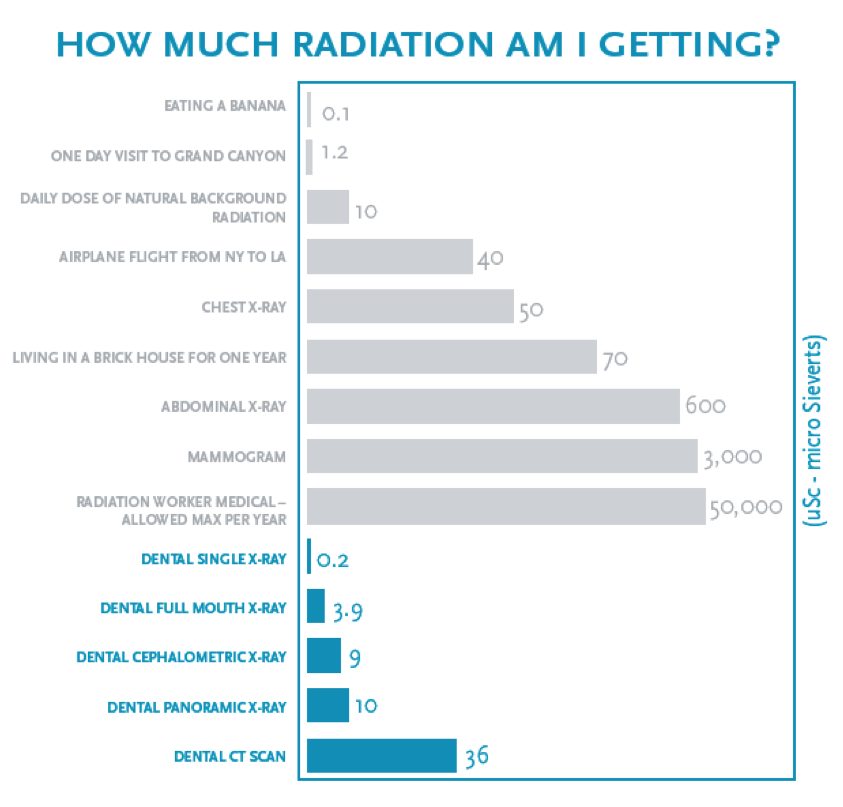 Did you not just have x-rays taken last year or the year prior to last? You can’t remember, but you are positive that you want to postpone taking anymore due to the risk of more radiation exposure, right? Is there a risk? And how high is the risk of radiation exposure? Is it worth it?
Did you not just have x-rays taken last year or the year prior to last? You can’t remember, but you are positive that you want to postpone taking anymore due to the risk of more radiation exposure, right? Is there a risk? And how high is the risk of radiation exposure? Is it worth it?
According to a recent American Dental Association article, “The National Council on Radiation Protection and Measurements estimates that the mean effective radiation dose from all sources in the United States is 6.2 millisieverts (mSv) per year, with about 3.1 mSv of this dose from natural sources and about 3.1 mSv from man-made sources. About half of the man-made radiation exposure is related to CT scanning.” So what does this mean to you in terms of dental digital x-rays and your exposure to radiation? Let us demonstrate:
According to this chart, you are at a higher risk of radiation exposure taking a flight across the U.S. than getting your routine dental x-rays updated. Essentially, the amount of radiation used during dental x-rays is extremely low especially in comparison to to our natural environment and the background sources of radiation that we are exposed to everyday.
However, there are precautions that Dr. Kimes’ office adheres to, such as routine maintenance on all equipment, use of protective aprons and thyroid collars, limiting the number of images taken to obtain essential diagnostic information as well as following guidelines on how often to take images.
Patients should have routine and regular x-rays taken at their recare appointments as needed. X-rays are not necessary at every recare appointment for most patients and the frequency of x-rays depends on each particular patient.
So, the next time that you need dental x-rays, we hope that you can rest assured that the radiation exposure is extremely minimal and that our office has abided by all the guidelines to keep our patients and employees safe and healthy.


